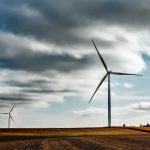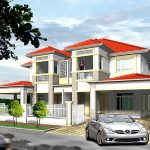Different Building Construction Types
Being educated regarding disaster and risk management operations might seem irrelevant to most people, but it’s incredibly important to those professionals out there who work hard to ensure the safety of a building, the people within that building, as well as the wellbeing of the entire community.
Take firefighters, for instance, or people whose job description involves deconstructing a building or house, as well as any person involved in the procedures of disaster risk management. These professionals have a lot of factors to consider when being taught how to implement their job description on the regular.
One of the most important things firefighters and professionals are taught is how buildings are constructed differently, as well as the importance of different structures and materials integrated into buildings.

Being educated on different building constructions and these materials allows firefighters to predict when a building or house was built and whether it has collapse tendencies. This also allows them to determine the severity of a fire, determine the effects of large quantities of smoke and even the risk factors involved with a flood.
5 Different Categories of Buildings and Structures
When a building is measured, it can be categorized into one of five categories which ranges from how stout the construction is and how fragile it can become due to fires. These types include different characteristics, which will help firefighters and disaster risk professionals to bring a distressed building or situation to complete safety.
- Fire-Resistive
As the stoutest structure that’s prone to encourage high-rising levels of fire, which is usually the case with buildings that are over 75 feet tall. In recent years these fire-resistive structures have also been implemented in buildings that are 35 to 55 feet high. Commonly, these structures consist of concrete and are integrated with steel, which all adds to its perfect design that allows for protection against fire.
- Non-Combustible
This type of structure is found in relatively new buildings and existing building that has been remodeled from previous commercial structures. The walls and roofs of this type of construction implement non-combustible materials that are integrated into walls and include a metal structure and a combination of these materials covering the top of the roof.
- Standard Structures
These structures can be old or new. Either way, they have non-combustible walls and roofs that are made from wood. The newer the building, the lighter the roof system will be and is most likely to be supported by a tilt-slide and reinforced masonry. This type of structure includes constructions that range from panelized roof systems to parallel chord truss.
- Wood Framed Structures
Found in the modern day home with roofs and walls that are also made from combustible materials, which includes wood on a common basis. Most often, both the roof and walls will be wood-framed with a rooftop consisting of asphalt or ceramic tiles over either lightweight OSB or trusses.
- Heavy Timber
Found in older buildings, utilizing lumber for interior elements or structural parts in a building. This type of building is the safest in conditions of fire, but often the least contained.








